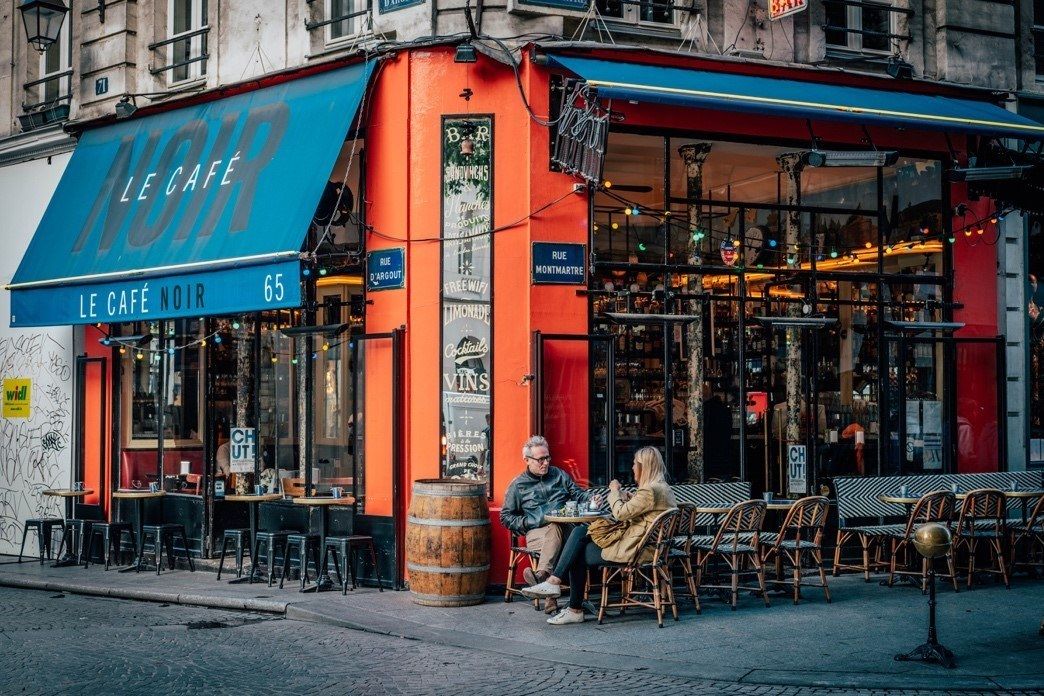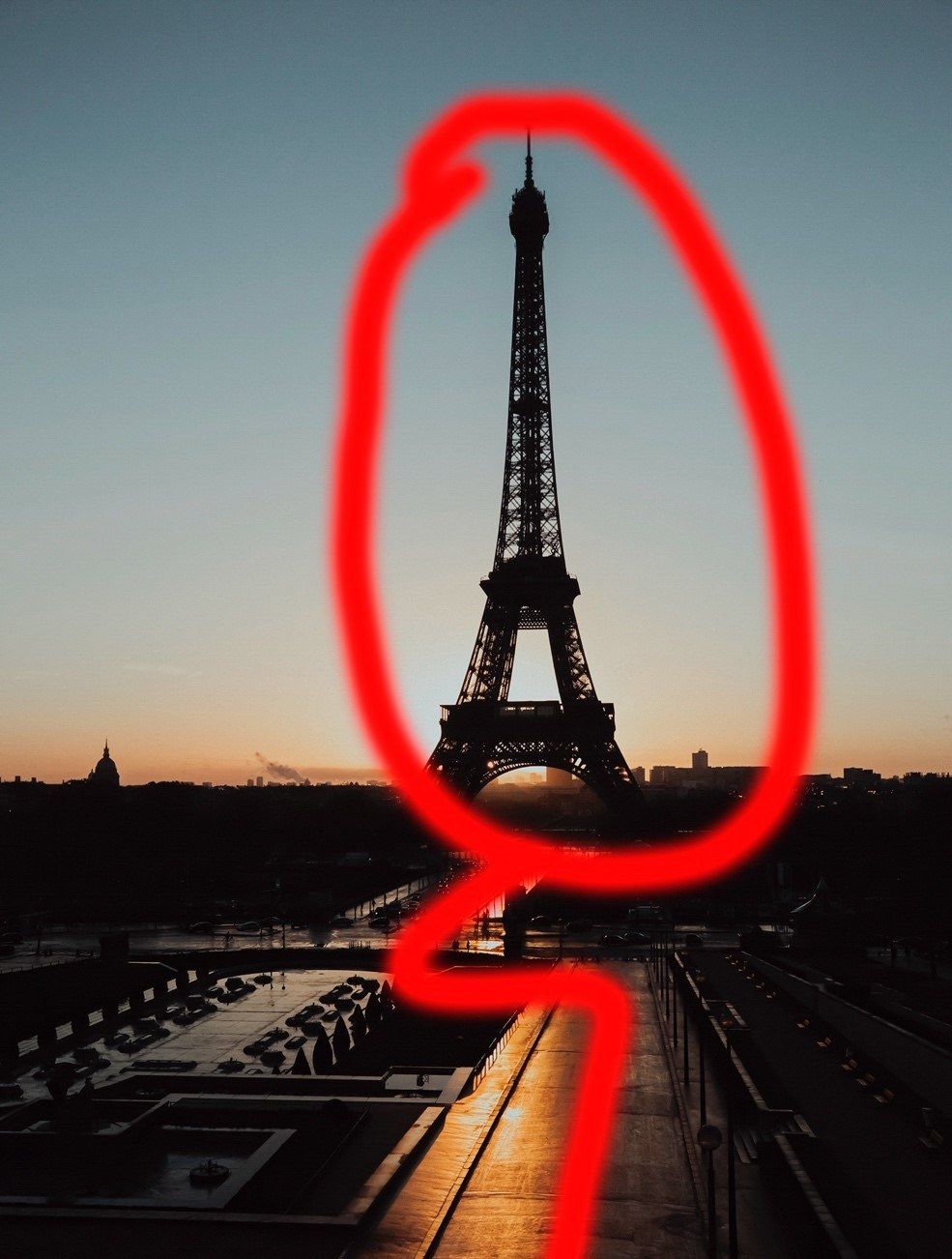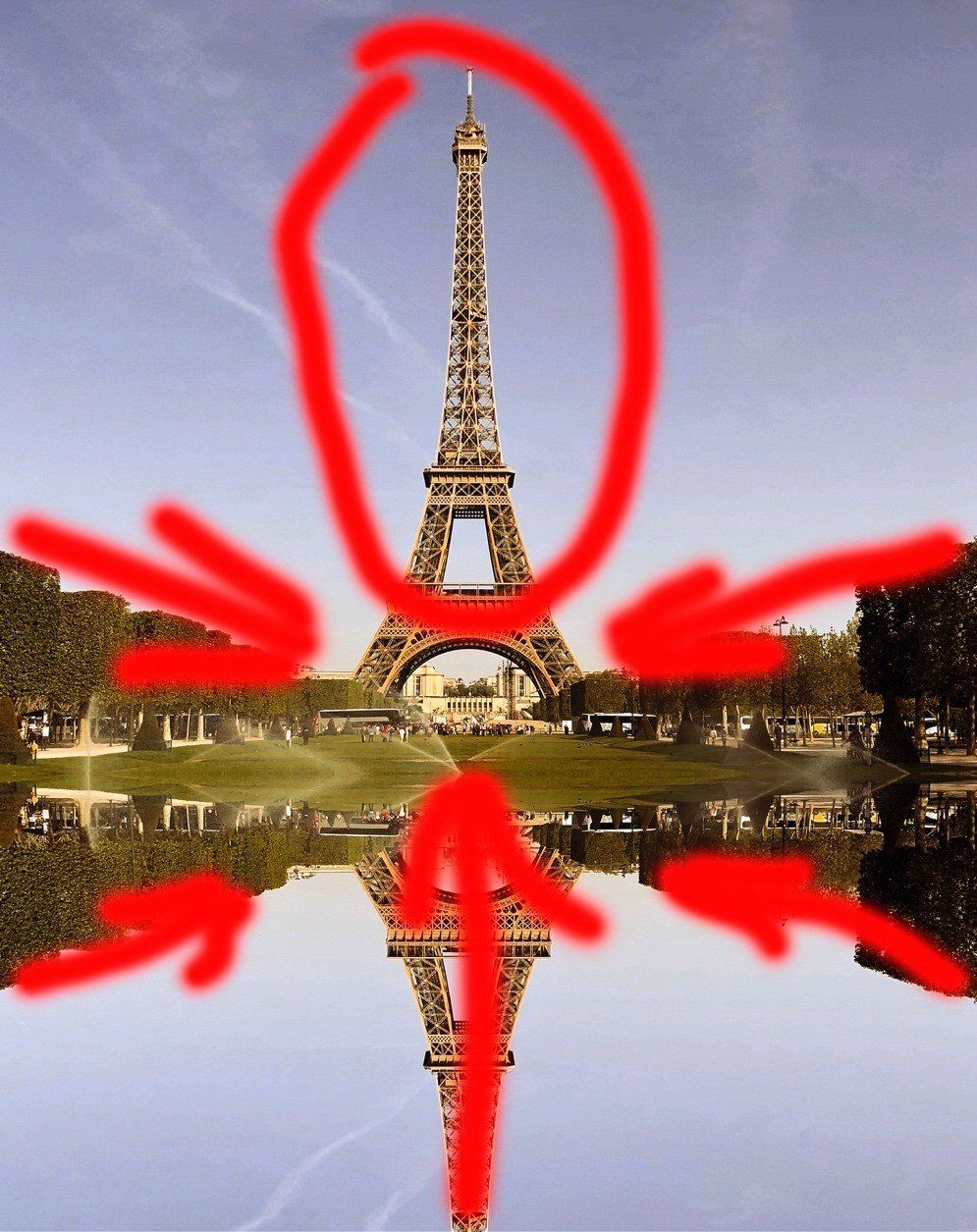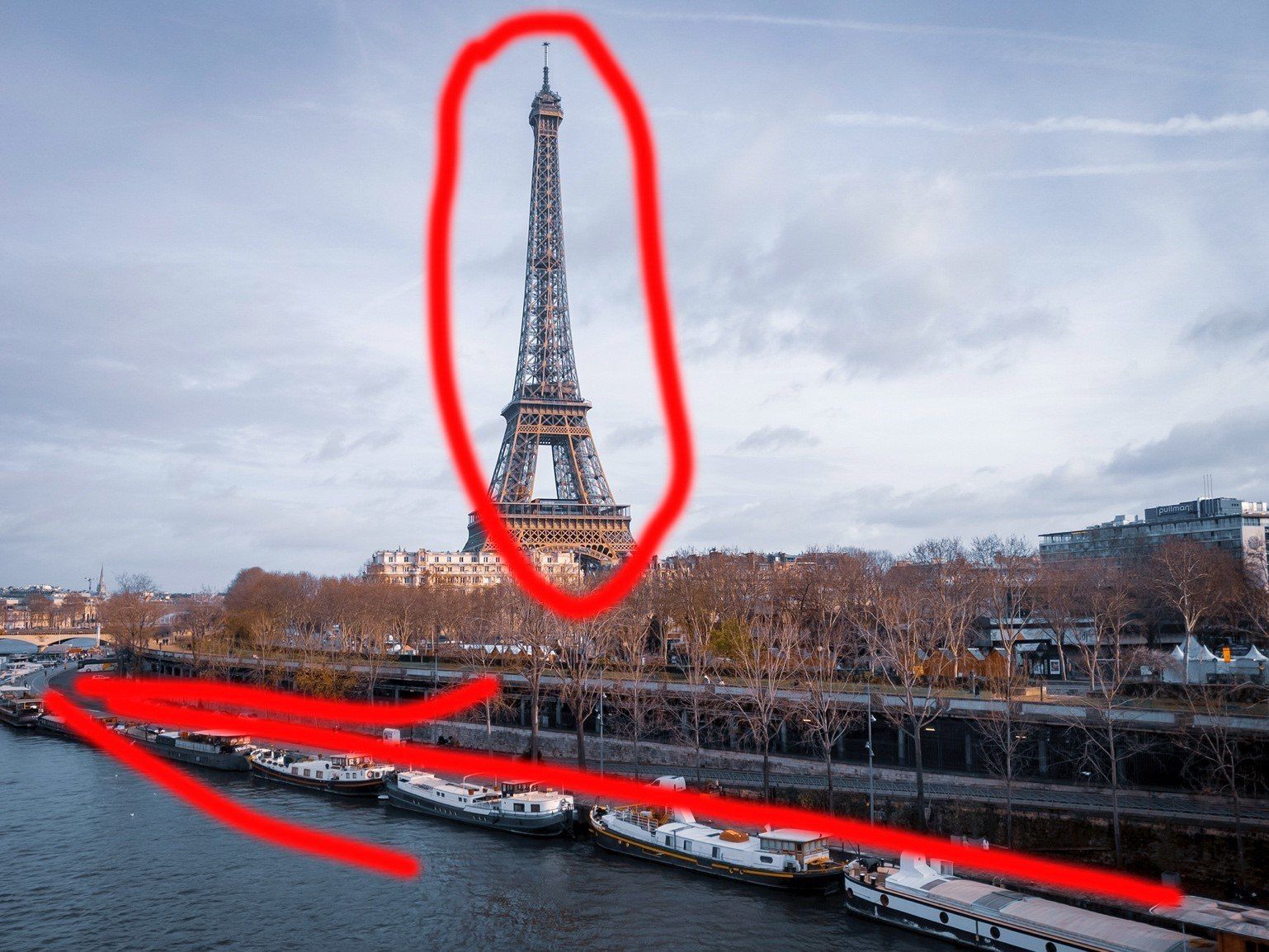The Leading Lines of Paris

New / Noteworthy
EDITOR’S NOTE: If you’re looking for an effective way to learn photographic composition, take a peek at our popular Understanding Composition ebook. If you missed out on your copy last time, it’s available again and on-sale right now.

When Bob found his wife Chantel, she was lying on her back with her camera pointed up at the Eiffel Tower.
“What are you doing?” He asked.
“I’m trying to capture an unusual angle of the Eiffel Tower.”
He chuckled. “Don’t laugh at me!” She said with a wry smile.
“I’m not,” he replied. I’m laughing at your ingenuity and drive for perfection. That’s why I love you.”
She held out her hand, and he pulled her up.
“Let’s get a coffee,” she said.

This trip was their first photography adventure together. As recent ‘empty nesters,’ they were doing it right by spending three weeks in Paris.
Bob had years of experience in photography as an Advertising Art Director. Chantel was new to it but already passionate about capturing sights with her recently acquired DSLR camera.
Now that the kids were on their own, this opened up more opportunity for a shared love with Bob and Chantel – photography.
First on their list was the Eiffel Tower.

Bob had taken this beautiful photograph from the walkout balcony of their hotel room, and Chantel was determined to get a better shot of the Eiffel Tower than her more experienced husband.
The waiter approached them, and Bob said, “Deux expressos et un verre d’eau chacun, s’il vous plaît.”
The waiter replied, “Tres bien Monsieur. Souhaitez-vous chacun une pâtisserie?”
Bob asked Chantel, “Would you like a pastry?”
“Bob? Really? You have to ask.”
Bob turned to the waiter.
“Oui. Deux pâtisseries s’il vous plaît.”
“Très bon.” The waiter hurried inside.
Chantel pulled her laptop from her backpack and started downloading some pictures.
Bob sat back and smiled. “How is my ‘Dora Maar’ doing with her Eiffel Tower pictures?’
“Who is Dora Maar?” She asked while fiddling with her memory cards.
“She was a famous French photographer. She was also a poet, painter, and love interest of Picasso.”
“So, what you’re really saying is that you’re Picasso.”
He laughed. “Seriously though, how is it going?”
“You know, I was reading up on some basic composition stuff before we left, and I had decided to try and incorporate leading lines into my Eiffel Tower pictures. But I’m unsure of what I’m getting.”
“Awe, leading lines, one of the fundamental tools of photography composition. Care to share with me?”
“Will you be nice?”
“Of course! You know that.”
“Okay. Scoot around here- where the light is better.”

“I took this last night, and I think the leading line is really strong.”
“I agree,” Bob replied. “But remember, most experts say that a photo should have at least three composition elements to form a strong artwork. Your leading line is strong. But cutting off the tip of the Eiffel Tower takes away from its value as your creative subject, and the light pole in the foreground is a bit distracting.”
“Hmmm. I can see that. How about this one?”

Bob studied the photo.
“You nailed the exposure. But the leading line still isn’t leading toward the Eiffel Tower, which is your subject. The line is quite strong. However, rather than leading, it’s cutting off the lower third of the picture.”
“Shoot! Now that you point it out. I can totally see that as well!”

“This is the first one that I shot when we went out last night, and I was incredibly proud when I took it. It was right at dusk. I hope you like this one.”
“Wow!” Bob said enthusiastically. “This is a great picture, my love, and it’s a perfect execution of a leading line.”
“Yeah?”
“Yeah! Do you still have that app where you can draw on your photo without actually altering it?”
“I sure do.”
“Let me show you.”
Bob turned the laptop in his direction and made a few marks. He then showed it to Chantel.

“You see,” Bob said, “The reflected light on the road creates a perfect leading line right toward your subject. Plus, it’s a Z curve, and it creates color contrast. Boom! You have three composition tools working for you. This one is going up on the wall when we get home.”
Chantel got excited.
“Let me show you my best shots from today and see how the leading lines worked.”

“I took this one first thing this morning. I thought that the streaky clouds in the sky were perfect leading lines right toward the tower.”
“Not a bad thought,” Bob replied. “Although, in my opinion, the reflection and the rows of hedges on both sides of the pond form more visible leading lines than the clouds do. Let me show you.”
Bob took over the laptop once again.

“Wait a minute, Bob. Those aren’t lines. The clouds are lines!”
“A leading line doesn’t have to be a physical line. It can be a change in color, contrast, or even the direction that someone is looking.
But remember, when using composition elements like leading lines or focal points, they should be obvious. You don’t want someone to have to guess why it’s there. They should be so visible that they can’t be missed. The only thing that should be more visible in your picture is the subject. I’m giving you a grade B on this one.”
“A grade of B!” She playfully punched his arm.
“I’m kidding, Honey. It’s terrific. But the clouds don’t create a strong leading line here, that’s all.”
“Okay. How about this one?”

Chantel put up her hand. “Before you say anything. I think this leading line is quite visible. I also think the Eiffel Tower looks really good, and the lighting is nice.”
“I agree with everything you said, Dear. But there’s still a slight problem.”
Chantel threw her hands. “What?”
“Can I draw on it,” he replied sheepishly.
She turned the laptop toward him.

“You see. Your subject is to the right of your line. Your leading line is leading the eyes off of the left side of the frame.”
“What? So, a leading line has to always end at the subject?”
“Not always. But in general, yes, at least until you are better acquainted with composition. A line that leads away from the subject can be confusing to a person who wasn’t here. I’m not saying this is a bad picture- at all. I like it. Good eye spotting those boats. But I encourage you to keep that in mind as you continue to take pictures.
Consider this; a slight change in your position might have had the boats pointing right toward the tower.”
Bob raised his eyebrows in a goofy fashion in the hope of appealing to Chantel’s sunny side.
“I never thought of that,” she replied.
Bob’s expression changed.
“What’s this!” He exclaimed while pointing at the laptop. “That looks like a winner!”
“Really?” She enlarged the photo.

“That is an outstanding photograph,” Bob exclaimed. “magazine-worthy, for sure! Plus, your leading lines are perfect. They are dominant, visible, and lead right toward your subject. Your composition skills are really starting to shine, my love.”
Chantel soaked up the praise even though she didn’t realize that this shot had leading lines until now.
The waiter walked up and set down their order of expressos and pastries.
He glanced at Chantel’s computer and pointed at the picture.
“Pardon,” he said. “Est-ce que tu parles français?”
“I’m sorry. I don’t speak French,” Chantel replied.
My English not so good either. He gestured at the photo. You take?”
She shook her head, and said, “Yes.”
“Magnifique!” He kissed his fingers and threw the kiss into the air. He then patted her on the back with praise.
It was an excellent day for Chantel, and Bob was so very happy for her.
The end
Remember when using leading lines
- Just a single leading line or two doesn’t create as strong a composition as leading lines with at least two other forms of composition.
- A leading line doesn’t have to be a ‘physical’ line. It can be a line created by color, contrast, or line of sight.
- Ensure that your leading line is ‘leading’ and not creating the effect of cutting off a portion of your picture.
- S curves and Z curves are a form of leading lines.
- Make sure your leading line is dominant enough to be noticed; otherwise, it isn’t working.
- In most cases, you want your leading line to lead toward the subject or at least near the subject.
BONUS– I've got something special for you on the next page...
If you’d like to learn the key elements of composition and how to apply them to consistently get remarkable shots, check out our best-selling guide Understanding Composition. It has everything you need to know about photographic composition and how to use it to create great photographs.
If you missed out on your copy last time. It’s available again, and on sale right now. Plus it includes a handy composition rules and tools checklist as a free bonus.
Click below now, to read about it on the next page…

About Kent DuFault
Kent DuFault became a photographer in September of 1974. He took a “Basic Photography” class in high school and was hooked for life. His best-selling guide, Understanding Composition has helped thousands of photographers worldwide learn the key elements of photographic composition.


